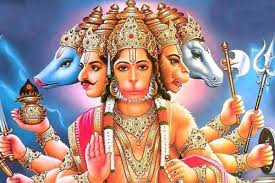
Hanuman Puja is a powerful and sacred ritual dedicated to Lord Hanuman, the epitome of strength, devotion, courage, and selfless service. Worshipped as the greatest devotee of Lord Rama, Hanuman is revered for his unwavering faith, fearlessness, and boundless energy. Hanuman Puja is especially performed on Tuesdays and Saturdays, and more elaborately on Hanuman Jayanti, which marks his divine birth.
The puja begins with the devotee taking a purifying bath and cleaning the altar. A picture or idol of Lord Hanuman, often in a blessing posture or carrying the Sanjeevani mountain, is placed on a red or orange cloth. The puja starts with Ganapati Puja, followed by Sankalpa (a solemn vow to perform the ritual with devotion).
A key part of Hanuman Puja includes chanting the Hanuman Chalisa, Hanuman Ashtottara Shatanamavali (108 names), and other powerful mantras like “Om Hanumate Namah” and the Bajrang Baan. These prayers invoke Hanuman’s divine presence and seek his blessings for courage, protection from evil forces, mental peace, and spiritual strength.
Offerings include red flowers, sindoor (vermilion), coconut, bananas, betel leaves, and sweets like jaggery and laddus, especially boondi laddus, which are believed to be Hanuman’s favorite. The burning of camphor and incense adds sanctity to the atmosphere.
Devotees meditate on Hanuman’s qualities—his loyalty, humility, and unshakable faith in Lord Rama. The puja concludes with an aarti, and the prasadam is distributed.
Hanuman Puja is not only a ritual but a spiritual practice that empowers the soul. It removes fear, grants vitality, and uplifts the mind. By worshipping Lord Hanuman, devotees are blessed with inner strength, protection from negativity, and the ability to overcome life’s challenges with devotion and discipline.

